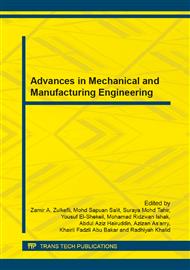p.275
p.281
p.287
p.292
p.298
p.304
p.310
p.315
p.323
Performance Improvement of Tubular-Ice Making Machine by Reducing the Feed Water Temperature with Shell and Tube Heat Exchanger
Abstract:
The paper presents a study on performance of improvement carried out on a tubular ice making machine by reducing feed water temperature using a shell and tube heat exchanger. An ice making machine with a capacity of 20 ton per day was used to in this study. The shell and tube heat exchanger was designed to reduce the feed water temperature. It has a length of 1.5 meters and 3.5 m2 of heat transfer area. The heat exchanger were installed at the inlet of an evaporator. Then, the performance and energy consumption of the ice making machine were examined with the experimental condition of cooling temperature at 20°C and 30°C. The comparison of the performance and energy consumption before and after heat exchanger installation were also studied. From the experiment, the results showed that the heat exchanger can reduce the feed water temperature by an average of 7.5°C, and the energy consumption was decreased by 17.1 %. The cycle time for ice production was decreased to 7 minute/cycle, and the capacity of the ice making machine was increased by 17.5%. If the cost of running the heat exchanger is 200,000 baht, this solution can potentially save the energy expense of up to 269,570 baht/year with a payback period of 0.93 year.
Info:
Periodical:
Pages:
298-303
Citation:
Online since:
June 2014
Price:
Сopyright:
© 2014 Trans Tech Publications Ltd. All Rights Reserved
Share:
Citation:


